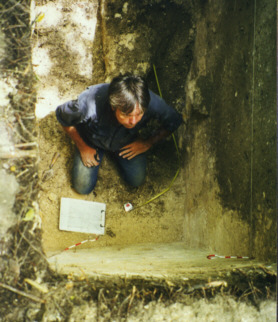|
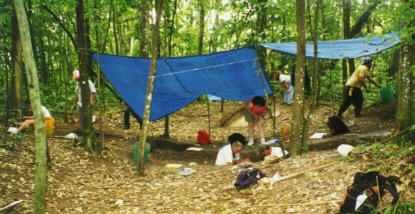 Rain forest has completely overgrown the island in the centuries since the Maya left. Several small structures have been excavated there over the last two years, including a modest shrine and a boat dock. Dr. Marilyn
Masson, the project director, believed Maya living on the shore of the lagoon used the island for ritual purposes.
This interpretation is somewhat clouded by the discovery of a domestic dwelling on the island and a shrine on the shore, but archaeology and looking into the past is never easy.
Although there were no large structures, there is substantial evidence the island was leveled and extended during this period. It is possible that this depression (photo left) on the northern end of the island was a ball court.
We found a headless skeleton in the center of the depression. The ball game had important ritual meaning in Mayan culture and is often associated with sacrifice by beheading. Rain forest has completely overgrown the island in the centuries since the Maya left. Several small structures have been excavated there over the last two years, including a modest shrine and a boat dock. Dr. Marilyn
Masson, the project director, believed Maya living on the shore of the lagoon used the island for ritual purposes.
This interpretation is somewhat clouded by the discovery of a domestic dwelling on the island and a shrine on the shore, but archaeology and looking into the past is never easy.
Although there were no large structures, there is substantial evidence the island was leveled and extended during this period. It is possible that this depression (photo left) on the northern end of the island was a ball court.
We found a headless skeleton in the center of the depression. The ball game had important ritual meaning in Mayan culture and is often associated with sacrifice by beheading.
|
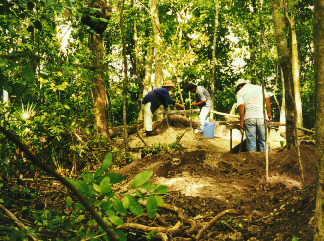
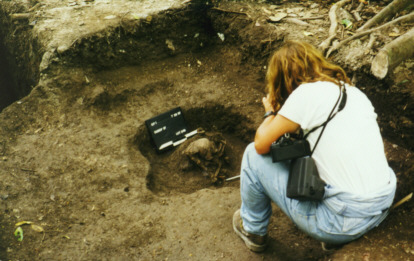
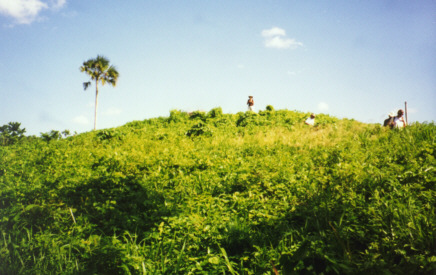
 Rain forest has completely overgrown the island in the centuries since the Maya left. Several small structures have been excavated there over the last two years, including a modest shrine and a boat dock. Dr. Marilyn
Masson, the project director, believed Maya living on the shore of the lagoon used the island for ritual purposes.
This interpretation is somewhat clouded by the discovery of a domestic dwelling on the island and a shrine on the shore, but archaeology and looking into the past is never easy.
Although there were no large structures, there is substantial evidence the island was leveled and extended during this period. It is possible that this depression (photo left) on the northern end of the island was a ball court.
We found a headless skeleton in the center of the depression. The ball game had important ritual meaning in Mayan culture and is often associated with sacrifice by beheading.
Rain forest has completely overgrown the island in the centuries since the Maya left. Several small structures have been excavated there over the last two years, including a modest shrine and a boat dock. Dr. Marilyn
Masson, the project director, believed Maya living on the shore of the lagoon used the island for ritual purposes.
This interpretation is somewhat clouded by the discovery of a domestic dwelling on the island and a shrine on the shore, but archaeology and looking into the past is never easy.
Although there were no large structures, there is substantial evidence the island was leveled and extended during this period. It is possible that this depression (photo left) on the northern end of the island was a ball court.
We found a headless skeleton in the center of the depression. The ball game had important ritual meaning in Mayan culture and is often associated with sacrifice by beheading.
